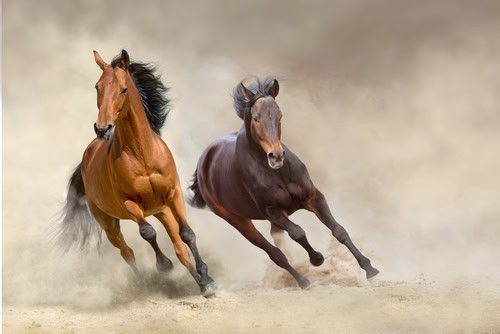July 31, 2025
Have you ever wondered what sets a mustang roaming the American West apart from the thoroughbred in your local stable? While both are horses, the differences between domesticated horses and wild horses run much deeper than their living arrangements. These magnificent creatures have evolved along separate paths for thousands of years, creating distinct variations in behavior, physical traits, and social structures.
Understanding these differences helps us appreciate both the wild spirit that still exists in our domestic companions and the remarkable adaptability that has allowed horses to thrive in environments ranging from carefully managed farms to rugged wilderness areas. Whether you’re an experienced equestrian or simply curious about these amazing animals, exploring the contrasts between wild and domesticated horses reveals fascinating insights into animal behavior, evolution, and our relationship with nature.
Gladiator Equine will walk you through the key distinctions between these two groups, examining everything from their daily behaviors to their complex social hierarchies. By the end, you’ll have a deeper appreciation for both the wild mustangs that symbolize freedom and the domesticated horses that have partnered with humans throughout history.
Understanding Domesticated Horses
Domesticated horses represent thousands of years of selective breeding and human partnership. These animals have been bred specifically to work alongside people, whether for transportation, agriculture, sport, or companionship. The domestication process began approximately 5,500 years ago on the steppes of Central Asia, fundamentally altering the horse’s relationship with both humans and their environment.
Through careful breeding programs, humans have developed over 300 distinct horse breeds, each tailored for specific purposes. Draft horses like Clydesdales were bred for their strength and size to pull heavy loads, while Arabian horses were developed for endurance and speed in desert conditions. Sport horses like Warmbloods combine athleticism with trainability, making them ideal for competitive riding disciplines.
The domestication process has created horses that are not only physically suited to their intended roles but also mentally adapted to human interaction. These animals have learned to trust human guidance, respond to training, and integrate into human-managed environments. This partnership has been so successful that domesticated horses now outnumber their wild counterparts by a significant margin worldwide.
Defining Wild Horses
Wild horses encompass both truly wild populations and feral horses that have returned to natural living conditions. In North America, most “wild” horses are feral descendants of domesticated animals that escaped or were released over the centuries. True wild horses, such as Przewalski’s horses in Mongolia, have never been domesticated and represent the original wild horse genetics.
These animals inhabit diverse landscapes across several continents, from the sagebrush country of Nevada to the rugged terrain of Australia’s Outback. In the United States, the Bureau of Land Management oversees wild horse populations on public lands, managing herds that roam across millions of acres in ten western states.
Wild horse populations face numerous challenges, including habitat loss, climate change, and competition with livestock for resources. However, they play important ecological roles in their environments, helping maintain grassland ecosystems through their grazing patterns. Conservation efforts focus on maintaining genetically diverse, sustainable populations while balancing the needs of other wildlife and land uses.
1. Behavioral Differences
The behavioral contrast between wild and domesticated horses reflects their vastly different life experiences and evolutionary pressures.
Wild Horse Behavior
Wild horses exhibit strong self-preservation instincts that have been honed by generations of natural selection. These animals maintain a healthy fear of humans and will typically flee rather than approach people. Their survival depends on constant vigilance, quick decision-making, and the ability to assess threats rapidly.
Flight response in wild horses is immediate and decisive. When danger appears, the entire herd can mobilize within seconds, following established escape routes and regrouping at safe distances. This heightened awareness extends to all aspects of their daily lives, from feeding to sleeping, where at least one herd member remains alert while others rest.
Domesticated Horse Behavior
Domesticated horses have been bred and trained to suppress many of their natural flight instincts in favor of cooperation with humans. These animals often approach people seeking attention, food, or interaction, demonstrating the trust that has been built through generations of selective breeding and individual training.
The training process teaches domesticated horses to respond to human cues, accept handling, and perform specific tasks. This behavioral modification allows them to work safely around humans and other animals. Still, it also creates a dependency that makes survival in the wild extremely challenging for horses that have never experienced natural living conditions.
2. Physical Characteristics
While both groups share the same basic equine anatomy, subtle but significant physical differences have emerged through different evolutionary pressures.
Wild Horse Physical Traits
According to the Bureau of Land Management, wild horses often display a more robust build compared to many domesticated breeds. Their bodies are typically compact and sturdy, reflecting the demands of surviving in harsh natural environments without human care.
Wild horses frequently exhibit primitive markings that are less common in domesticated populations. These include dorsal stripes running down their backs, zebra striping on their legs, and bi-colored manes and tails. Their coats tend to be thicker and more weather-resistant, providing natural protection against extreme temperatures and precipitation.
Their hooves are typically harder and more durable, shaped by constant movement over varied terrain. This natural conditioning creates feet that are well-adapted to rocky, uneven surfaces without the need for horseshoes or regular trimming.
Domesticated Horse Physical Traits
Domesticated horses show tremendous variation in size, color, and conformation due to selective breeding for specific traits. From the massive Shire horses standing over 18 hands high to the diminutive Miniature horses barely reaching 34 inches, domestic breeds span an incredible range of physical characteristics.
Breeding programs have refined many aspects of horse anatomy, from the elegant neck carriage of Saddlebreds to the powerful hindquarters of Quarter Horses. These modifications often prioritize performance in specific disciplines over survival traits, creating animals that excel in their intended roles but may be less adapted to natural living conditions.
3. Diet and Health Management
The contrast between wild and domesticated horses is perhaps most evident in their approach to nutrition and health maintenance.
Wild Horse Diet and Health
Wild horses are natural grazers that spend 16-18 hours daily foraging for food. Their diet consists primarily of native grasses, with seasonal variations including shrubs, forbs, and other available vegetation. This constant movement while feeding provides natural exercise and helps maintain their physical condition.
These horses have developed remarkable self-care behaviors. They naturally seek out mineral-rich soils, engage in mutual grooming to manage parasites, and use environmental features like trees and rocks for scratching and rubbing. Rolling in dirt and dust helps control insects and maintain coat condition.
Their hooves are naturally maintained through constant movement over varied terrain, wearing at rates that match growth. Seasonal coat changes occur naturally in response to temperature and daylight variations.
Domesticated Horse Diet and Health
Domesticated horses typically receive carefully managed diets designed to meet their specific nutritional needs. This often includes a combination of hay, grains, and specialized feeds, along with vitamin and mineral supplements. Water is provided consistently, unlike wild horses that must travel to water sources.
Regular veterinary care is standard for domesticated horses, including vaccinations, dental work, and parasite prevention. Professional farriers trim hooves and apply shoes as needed to protect feet from wear and provide traction for specific activities.
However, this managed care can create health challenges unknown to wild horses, including metabolic disorders from rich diets, digestive issues from sudden feed changes, and behavioral problems from limited movement and social interaction.
4. Social Structure Dynamics
Both wild and domesticated horses are inherently social animals, but their group dynamics operate differently due to environmental constraints and human management.
Wild Horse Social Organization
Wild horses live in complex social structures centered around family bands typically consisting of a dominant stallion, several mares, and their offspring. The lead mare, usually the oldest and most experienced female, makes crucial decisions about movement, feeding areas, and safety.
These bands maintain territories and establish social hierarchies through natural behavioral interactions. Young stallions are eventually driven from the group and may form bachelor bands until they can establish their own families. This natural selection process ensures genetic diversity and social stability.
Communication within wild herds is sophisticated, involving subtle body language, vocalizations, and positioning that maintain group cohesion while minimizing conflict. The social bonds formed in these natural settings are strong and lasting.
Domesticated Horse Social Structure
Domesticated horses may live alone, in small groups, or in larger herds, depending on management practices. While they still exhibit natural herd behaviors when grouped, human intervention often disrupts natural social development and hierarchy establishment.
Stable environments can create artificial social structures where horses interact primarily during turnout periods. This limited social interaction may not fully satisfy their natural needs for companionship and can lead to behavioral issues such as weaving, cribbing, or aggression.
However, well-managed domestic herds can maintain healthy social dynamics, especially when horses are allowed consistent group turnout and stable social groups.
Human Intervention and Impact
The relationship between humans and horses varies dramatically between wild and domestic populations, creating different challenges and opportunities for both groups.
Human activities significantly impact wild horse populations through habitat encroachment, water source development, and land use changes. Management decisions about population control, relocation, and resource allocation directly affect wild horse welfare and survival.
For domesticated horses, human intervention is total and continuous. From breeding decisions to daily care routines, every aspect of these animals’ lives is influenced by human choices. This creates both opportunities for optimal care and risks from poor management decisions.
Responsible horse ownership requires understanding natural horse behavior and needs, even within domestic settings. This includes providing appropriate social interaction, movement opportunities, and mental stimulation that honor the horse’s inherent nature.
Conservation and Preservation Efforts
Protecting wild horse populations requires coordinated conservation efforts addressing habitat preservation, genetic diversity, and sustainable population management. Organizations like the American Wild Horse Campaign work to ensure these animals maintain their place in natural ecosystems while balancing multiple land use interests.
For domesticated horses, ethical breeding practices and responsible ownership help preserve genetic diversity and animal welfare. This includes supporting breeds at risk of extinction, maintaining breeding records, and ensuring proper care throughout the horse’s lifetime.
Education plays a crucial role in both wild and domestic horse welfare, helping people understand the unique needs and contributions of each population.
Find Therapeutic Technology For Your Horse at Gladiator Equine
Understanding these differences helps us become better stewards of all horses, whether they roam free across the landscape or share our daily lives. Each group contributes something valuable to our world and our understanding of the complex relationships between humans and animals.
For equine enthusiasts eager to take their horse care to the next level, explore the innovative solutions available from Gladiator Equine. Our patented products can improve safety, recovery, and overall wellness, giving your horse the edge it deserves. Contact us today to learn more.


